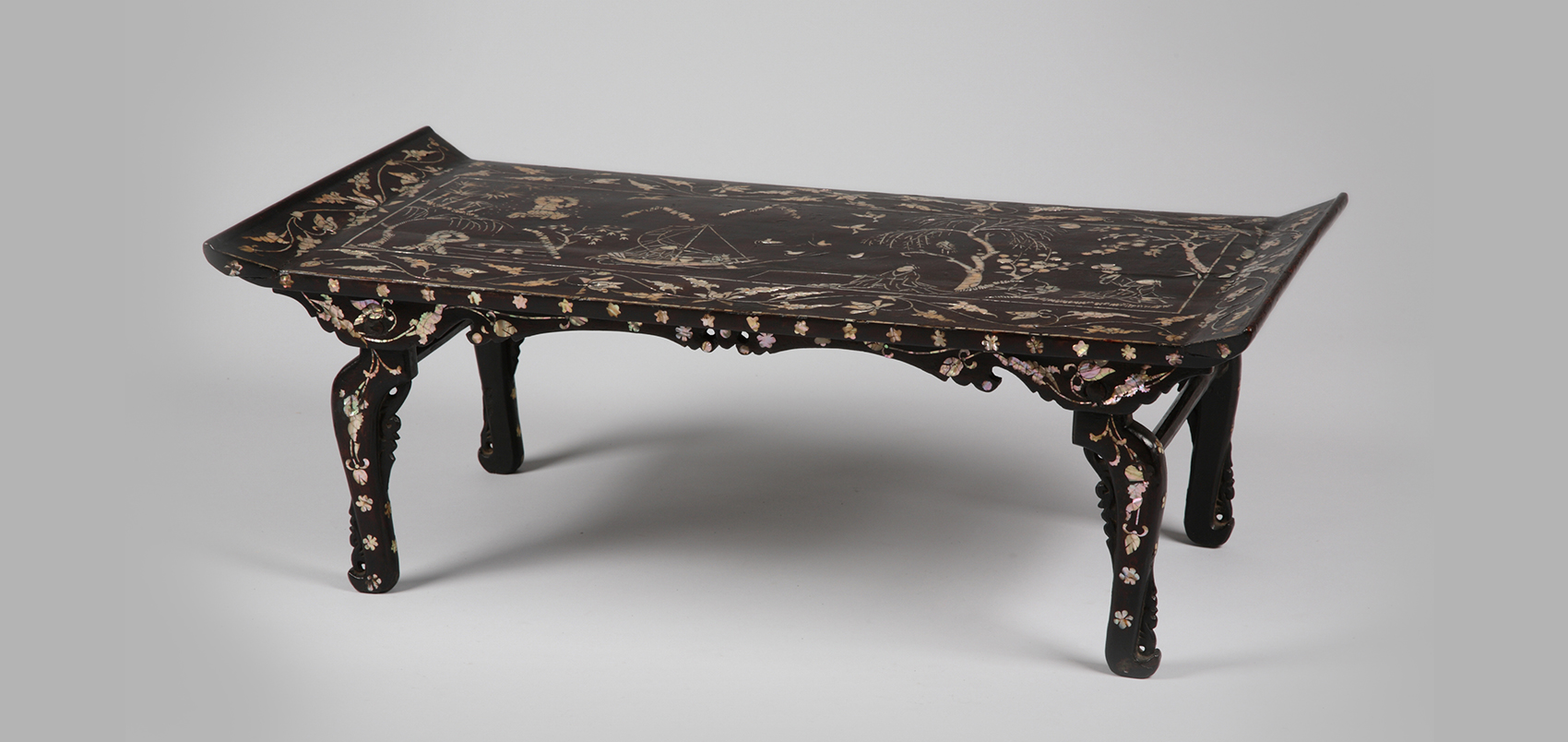
Contents





Architect Who Seeks to Transform Life






Mother-of-Pearl
Dazzling Colors of Nature
Korea’s younger generation is neglecting and even forgetting many of their country’s time-honored cultural heritages. Yet not all traditions are fading over time. Lacquerware inlaid with nacre, or mother-of-pearl, is keeping its legacy alive with a dazzling brilliance and everlasting quality like a precious jewel hidden in a vast mudflat.
Written by Lee Eun-yi, designer & writer Photos courtesy of National Folk Museum of Korea
 This mother-of-pearl table was made during the Japanese invasion of Korea (1910-45), featuring a drawing of a boatman on the table.
This mother-of-pearl table was made during the Japanese invasion of Korea (1910-45), featuring a drawing of a boatman on the table.Traditional Najeon Technique
Jagae, or mother-of-pearl, refers to the shells of abalone, mollusk or clam. The najeon technique involves inlaying mother-of-pearl on the surface of lacquered objects, and the resulting lacquerware is called najeon-chilgi. It is believed to have spread from the Tang Empire of China during the Three Kingdoms period (57 BCE-668 CE), and has been practiced in Japan and Southeast Asian countries. In Korea, the golden age of the najeon technique was the Goryeo (918 CE-1392 CE), to the point that the term “Goryeo najeon” was coined.
During the Goryeo era, lacquerware produced using the najeon technique was of such high quality that it was sent as gifts to the royal palace. Products are characterized by symmetrical chrysanthemum or arabesque patterns, thin strips of abalone shell and beautiful iridescent colors. During the Joseon era (1392-1910) and Japanese invasions of Korea (1910-45), the symmetrical design was replaced with more diverse patterns featuring plums, bamboo, the ten symbols of longevity, landscapes and geometrical shapes. The najeon technique was employed for all kinds of everyday products, including brush stands, dressing tables, stationary chests, hairdressing cases, small dining tables, plates, trays and wardrobes.
 Three story wardrobe is garnished with mother-of-pearl, and the elaborate drawings on the doors make the wardrobe even more luxurious.
Three story wardrobe is garnished with mother-of-pearl, and the elaborate drawings on the doors make the wardrobe even more luxurious.Timeless Beauty
The process begins by applying a coat of lacquer to a basic wooden frame. Next, the surface of the object is covered with a hemp cloth and coated with lacquer again. This process is repeated several times before inlaying with mother-of-pearl, and finally giving it a lacquer topcoat. It takes at least three months, and sometimes as long as three years, to complete a single piece of najeon-chilgi. The resulting masterpiece has an iridescent shine and is resistant to moisture and insects. The literary critic Lee Eo-ryeong described najeon-chilgi products as “jewels hidden deep in a golden-brown mud flat.”
It is no coincidence that many people today are drawn to mother-of-pearl. Commercial spaces use najeon-chilgi for interior decoration, and companies are applying mother-of-pearl inlay to shoes, stickers, cars and electronic devices. Its decoration is seen on tables or plates as well. Masters of najeon-chilgi are also catering to modern tastes. For example, the design brand Cheyul was born out of a collaborative project between artisans like Sohn Daehyun and contemporary designers. The artist Oh Yu-mi broadened the horizons of najeon-chilgi by introducing more diversified colors. As the culmination of nature, history, craftsmanship and artistry, najeon-chilgi is proof positive that sophisticated traditional craftsmanship never goes out of style.
 The plates are made with mother-of-pearl with the center embellished with cranes and petals. These were made after the 2000s.
The plates are made with mother-of-pearl with the center embellished with cranes and petals. These were made after the 2000s.Other Articles





Architect Who Seeks to Transform Life





Application of subscription
Sign upReaders’ Comments
GoThe event winners
Go


 January 2019
January 2019


